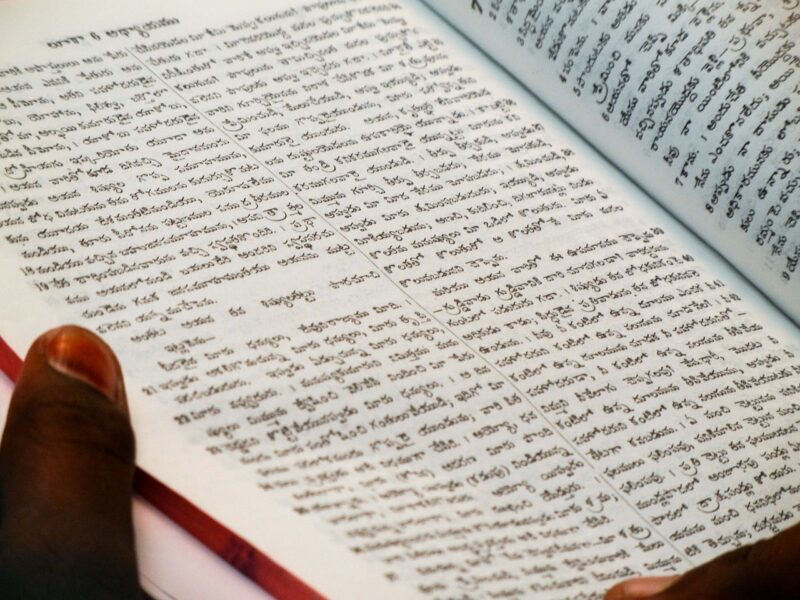How AI-Powered Language Translation Is Breaking Down Communication Barriers
November 12, 2024

In today’s increasingly globalized world, effective communication is more vital than ever. Whether it’s businesses aiming to expand their reach, travelers venturing into foreign lands, or international collaborations striving for harmony, language barriers can hinder understanding. Fortunately, advancements in technology, particularly AI-powered language translation, have emerged as one of the most impactful tools for bridging these communication gaps.
1. The Evolution of Language Translation
Language translation has come a long way since the early days of manually written translation. The invention of the internet has revolutionized the way we communicate across cultures and borders. Early machine translation systems, like Systran and even Google Translate, used rule-based paradigms that often produced stilted and inaccurate translations.
However, with the rise of artificial intelligence and machine learning, translation has entered a new era. AI systems learn from vast datasets of bilingual texts, improving their accuracy and fluency as they go. Modern AI models, such as OpenAI’s language models and Google’s neural machine translation, can now understand context, idioms, and cultural nuances, creating far more reliable translations.
2. What Is AI-Powered Language Translation?
AI-powered language translation refers to the use of artificial intelligence technologies to convert text or spoken words from one language to another. This process involves a two-step method called encoding and decoding:
- Encoding: The original text is converted into a sequence of numbers, which are then processed by machine learning models trained on large datasets of multilingual texts.
- Decoding: The model takes the encoded information and generates an output in the target language, often adjusting for syntax, context, and semantics in a way that appears natural to native speakers.
This approach allows AI to provide translations that are not just word-for-word but convey the underlying meaning and tone appropriately, making communication more effective.
3. Benefits of AI-Powered Language Translation
AI-powered translation technologies offer numerous advantages that enhance communication in various fields:
- Real-Time Translation: With tools like Google Translate and Microsoft Translator available as apps, users can communicate instantly, whether during video calls or through texts, breaking down barriers in real-time.
- Increased Accessibility: AI translation services can be integrated into a variety of platforms, making information available to more people around the world regardless of their native language. This is crucial in sectors like education, healthcare, and customer service.
- Cost Efficiency: By automating the translation process, businesses save on hiring substantial translation resources, allowing them to allocate funds to other areas while maintaining effective communication in different languages.
- Improved Contextual Understanding: Modern AI models are trained on diverse texts and can provide translations that are not only grammatically accurate but also contextually relevant, preserving the original message’s integrity.
These benefits underscore how AI-powered language translation continues to redefine how we communicate globally.
4. Practical Applications Across Industries
AI translation technology finds applications in diverse sectors, reinforcing its role as a communication facilitator:
- Business: Companies aiming to enter international markets can utilize AI translation to localize websites, communicate with customers, and translate marketing materials efficiently and accurately.
- Healthcare: During medical consultations, AI can help translate conversations between healthcare professionals and patients who speak different languages, ensuring that vital health information is accurately conveyed.
- Travel and Hospitality: With AI language translation apps, tourists can engage with locals more meaningfully, asking for directions, enjoying authentic culinary experiences, and discovering cultural treasures without feeling lost in translation.
- Education: Language learners can practice and refine their skills using AI-powered translation to immerse themselves in multilingual environments—translating academic articles, watching foreign-language videos, or connecting with study partners in different countries.
Moreover, translating academic knowledge, scientific research, and literature can inspire collaboration across nations, contributing to global understanding and innovation.
5. Challenges and Limitations
While AI language translation presents remarkable advantages, it is not without challenges and limitations:
- Cultural Nuances: Language is deeply intertwined with culture, and certain idioms or expressions may lose their meaning in translation. AI still struggles to fully grasp the cultural context behind certain phrases or idioms, which can lead to misunderstandings.
- Quality Variability: Although AI systems are improving, the quality of translation can be inconsistent depending on the languages involved and the complexity of the text. Technical jargon, regional dialects, or specialized fields may yield less accurate translations.
- Dependence on Data Quality: AI translation systems rely heavily on training data, which means that biases or inaccuracies within the dataset can persist in the translations generated, potentially leading to inconsistencies or errors.
- Lack of Human Touch: Though AI can mimic human interactions, it lacks the empathy and emotional intelligence that a human translator possesses, which can be crucial in sensitive situations like legal or medical translations.
To overcome these challenges, ongoing development and integration of human oversight are essential to ensure accuracy and contextual relevance in translations.
6. The Future of AI Translation
The future of AI-powered language translation looks promising as advancements in natural language processing (NLP) and machine learning continue to grow. Some areas to watch include:
- Universal Translators: Imagine carrying a device that translates any language in real-time during conversations, like the sci-fi concept of a universal translator. This concept is quickly moving towards reality as technology advances.
- Personalized Language Models: Future AI translations will likely adapt to individual users’ speaking styles and preferences for improved accuracy and fluency tailored to user interaction.
- Integration of Voice Translation: While text-based translations have seen significant improvements, voice translation is catching up, allowing for seamless communication in real-time conversations without a significant delay between speakers.
- Cross-Cultural Communication Initiatives: As AI translation technology continues to develop, organizations might leverage it for educational programs or cultural exchanges that emphasize global collaboration and understanding among different cultures.
In summary, AI-powered translation is poised to play a pivotal role in shaping the future of global communication.
Conclusion
AI-powered language translation is undeniably breaking down communication barriers and opening doors to understanding, collaboration, and mutual respect among people from different backgrounds. While it presents remarkable benefits, achieving perfect translations remains a work in progress as developers strive to address existing challenges. As technology advances, we can look forward to a world where language barriers are increasingly rendered obsolete, paving the way for harmonious global communication and connection.








